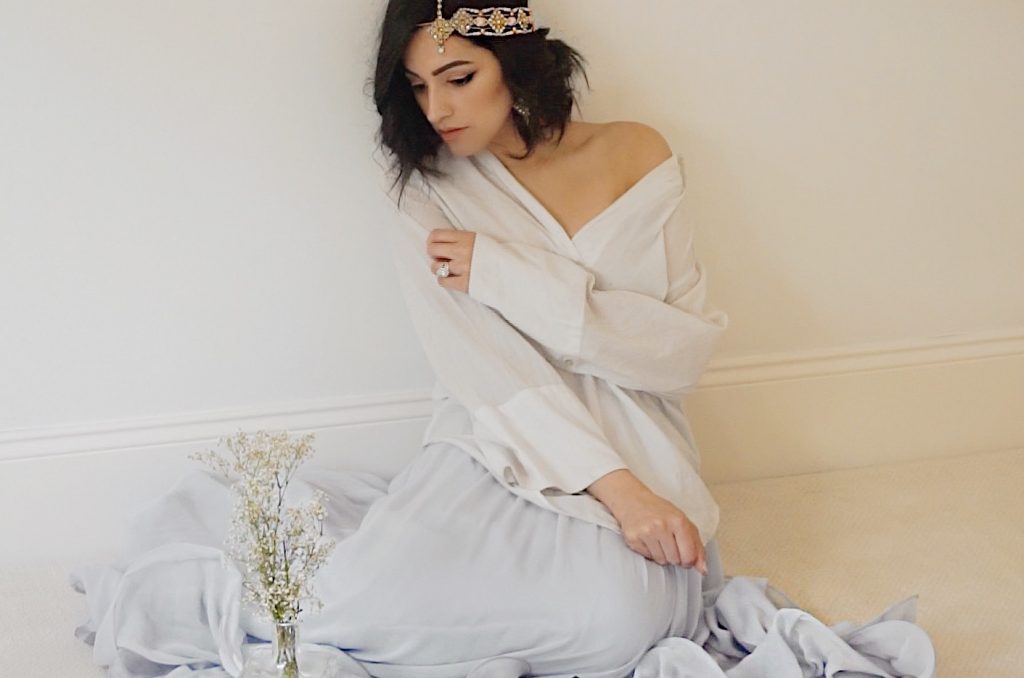
The following post is brought to you by Banglez.com — a jewelry brand based in Canada customizing accessories for your special day and beyond. Founded by Malinda and her high school sweetheart-turned-husband Hardip Chohan, Malinda guides the creative direction of Banglez with her discerning eye for design, while Hardip’s attention to craftsmanship and service ensures every customer finds their perfect pieces.
Jewelry unifies us from generation to generation, across continental borders and has the power to make us feel confident and beautiful all at once. More so, one’s identity is directly tied jewelry — especially South Asian jewels — where each stone tells stories passed down from great grandmothers to mothers to daughters and every sparkle speaks true to its value and love for our culture and heritage.
View this post on Instagram
From handpicking little treasures in the narrow streets of our motherland to ordering jewels online hoping they ship safely to international borders, we partnered with Canadian-based jewelry company Banglez.com to highlight a homegrown brand that has ties to our motherland but handcrafts its pieces on their home turf. We collaborated with a few bloggers to showcase Banglez jewelry shine through with their personal styles and hyphenated identities.
Amy Devan, style curator and fashion designer
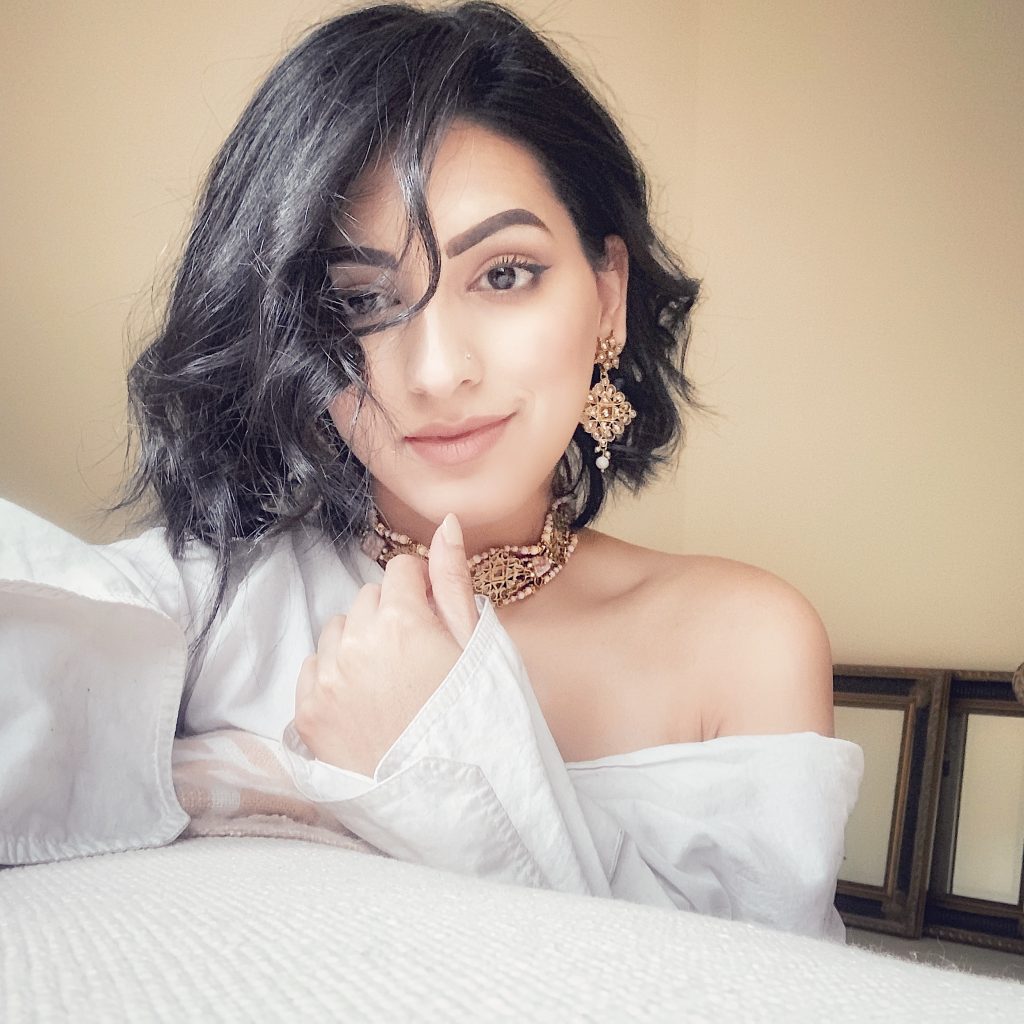
What makes you a desi-American?
Like many, I am one of only a few first generation American-born Indians in my family — I can count all of us on one hand. And though at times I would feel an internal cultural tug-of-war as a child, I was always proud of this dual identity and never felt I needed to quiet any part of ME.
I’m so grateful to my parents for instilling that sense of pride in me. I remember my mom telling me as a young girl to exude confidence when someone asked, ‘so what are you?’ She would tell me that through a strong, confident answer, an infectious passion for being both American and desi was bound to shine through. And she was right.
At what age did you understand your hyphenated identity was your strength, not your weakness?
I always saw it as a strength and celebrated both sides of this dual identity with pride, but what I struggled with as a child was more about where I ‘fit’ between these two parts of me that made me whole. How could I be equally Indian with a very American name like Amy that wasn’t short for something “Punjabi-sounding?” How could I be equally American when my parents would put up Christmas lights outside of our house every Diwali? I loved my hyphenated identity, truly loved it — but I wondered how I’d keep up both sides equally.
It wasn’t until I went to college at Drexel, a university with more desis and more hyphenated identities like me than I had ever known, where I realized I could absolutely be both American and Indian and feel like I ‘fit’ within both realms. Perhaps it was the idea of finally being around others just like myself that helped me to understand I have the power to make society and the world around me get to know both my desi side and my American side. So really, I never had to ‘fit’ in one bucket or the other – rather I have the power to make the world fit me!
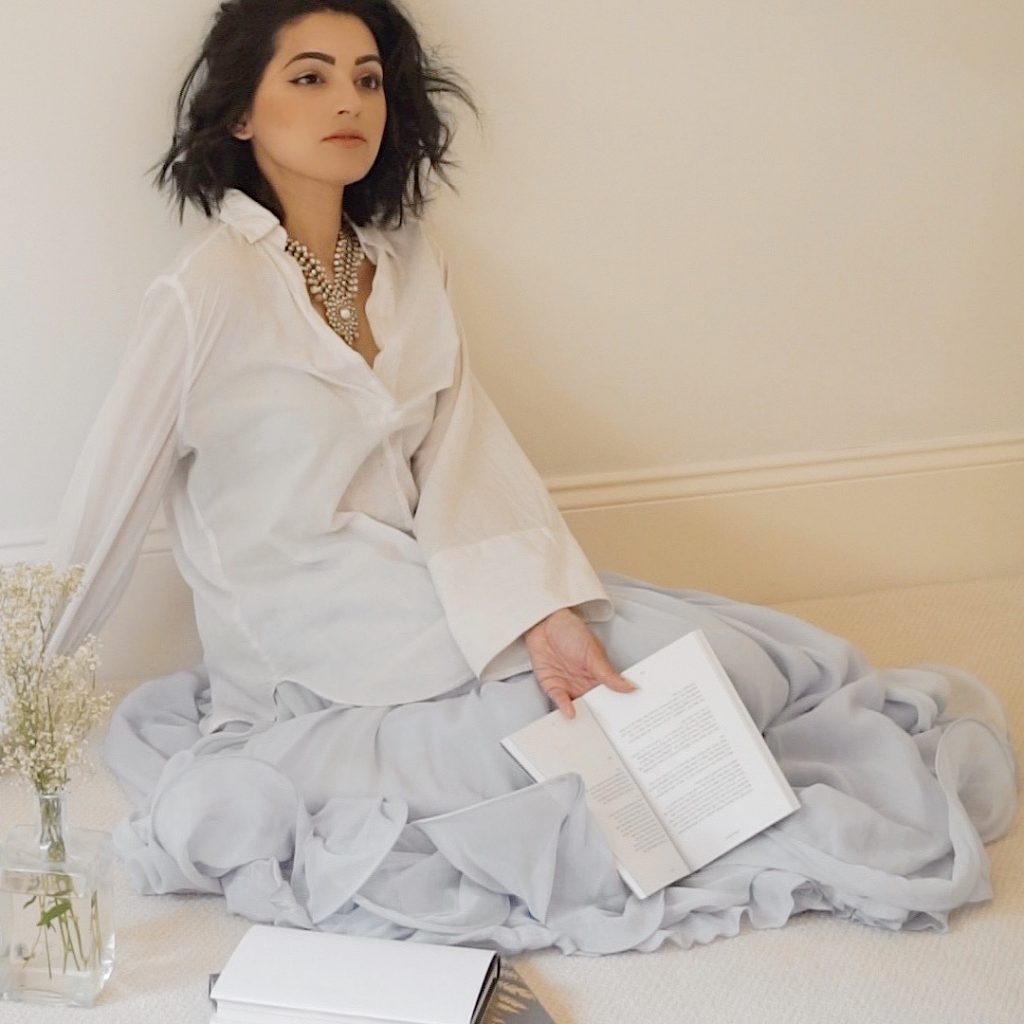
How does your hyphenated identity translate into your everyday life?
This hyphenated identity has a strong, but a subtle imprint on my everyday life. Though my lifestyle is ‘American,’ I suppose, my subconscious and my heart always reminds me I’m desi. I begin my day with a pooja, never let my feet touch anything educational, love eating achar with everything (even non-Indian food), and greet every desi uncle or aunty with namaste. Those little reminders bring me such happiness.
Tell us about the look you chose to do for this campaign. What makes it unique to your personal style, background, and identity?
As a designer and creative myself, my brand and personal aesthetic aim to blur the lines between east and west in a subtle but fluid way, as if one is becoming the other. I love the juxtaposition of classic, sophisticated clean lines of western design with the warm, Earth-tones and intriguing elegance of our rich South Asian culture. That wonderful mix is what defines me, my style, my identity.
I chose to use poetry and the words on a page as part of this campaign. The written (or spoken) word, regardless of language, is universal. It has this ability to make one dream, imagine, and feel a multitude of emotions. To me, that’s incredibly unifying and seamlessly ties my two worlds together.
Lisha Rajput, student and content creator
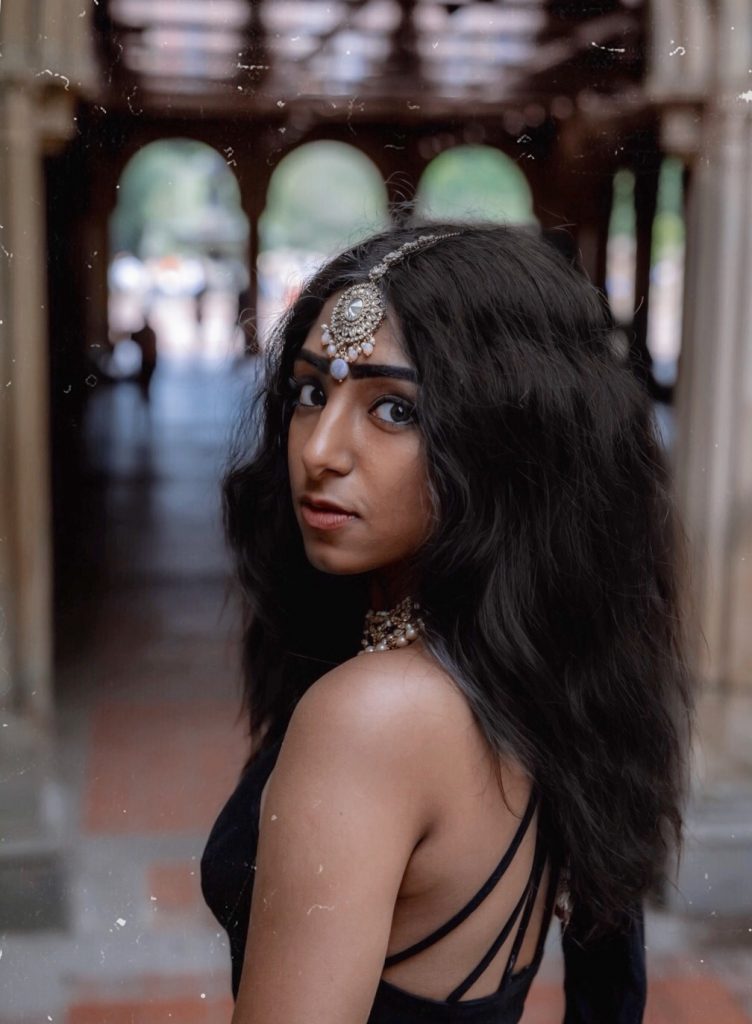
What makes you a desi-American?
Experience. I am a product of my experiences and the journey of self-identity. Although I was born in India, I cannot identify as being 100 percent desi, my upbringing simply will not allow me. I have spent two months in India, 11 years in Bermuda and 10 years in America. I have indulged my journey of self-understanding in two different enclaves that reward me with diverse cultural, societal and individualistic experiences, influencing me, defining me, making my identity, not uniform but a mosaic of two cultures. This has not always been as picturesque as it may sound on the surface.
Being Indian and American became an identity tug-of-war in which one just HAD to be secondary. Americanization was simply associated with a lack of belonging and I, a part of the second-generation youth, felt culturally inadequate and incomplete. This created a polarizing effect in my own identity. I have always had respect for both dichotomies between American and Indian culture but struggling to balance values and traditions taught at home and other practices that are more conducive to American culture became emotionally, mentally and physically exhausting. Being Indian soon enough became a performance, a performance in which I felt ignorant, culturally powerless with no room to cultivate new traditions that reflect my self-understanding of my self-made identity.
Being American made me apprehensive to outwardly project my Indian culture and heritage. It often happens that American desis are too desi for Americans and too American for desis. But when I stopped sacrificing and confining my individuality in this notion of single-identity and allowed myself to be a product of my own narrative and experience, having a dual-identity was normalized. To adopt this idea of American AND desi instead of American OR desi, regardless of situation, place, and company, is what makes me desi-American.
At what age did you understand your hyphenated identity was your strength, not your weakness?
I was 12. I was an ambassador for my middle school and one day I was assigned was to help out during Parent-Teacher conferences in which my job was to simply to direct and help parents navigate their way through the school. One student’s mother was meeting with a teacher and did not understand English. They needed someone who spoke Hindi and could translate. At that moment my dual-identity became my strength. The ability to connect people through the mediums of language, fashion, food, elements that are often seen as differences that divide us, is perhaps the greatest power dual-identities bring.
Countries often have a cultural, linguistic, or religious gap, but my dual-identity has allowed me to bridge between these gaps to bring cultures together and normalize their coexistence. To be included in, understand and relate to dialogues that are conducive to both desi culture and American culture has a sense of pride to it, the fact I always have something to say, something to connect to, something to teach, something to learn adds to my growth as a being and as a representation of desi-Americans.

How does your hyphenated identity translate into your everyday life?
If I could encapsulate my identity into one word, I couldn’t. It’s Indo-Western, it’s desi-American, it’s hyphenated. This hyphenation is not silent, it is loud and clear and unapologetically reflected in my self. I currently live in New York and lead the class New Yorker lifestyle. New Yorkers go places, but I am not going anywhere without my culture. Whether it be wearing jumkas and a graphic tee, or a bindi with a crop top, or pairing a dupatta with jeans and a kurta I have always tried blending my identity in my fashion.
But why stop there? I’ve even created my own language, Hindlish, Hindi and English, my sentences start with one and end with the other because I just love living the best of both duniyaas. That leads me to the token of music, I can feel all emotions in two languages whether that be through American Pop or Bollywood music and as a result my Spotify playlist becomes a kaleidoscope with both genres. Not a day has gone by in which I was either only American or only desi, I simply cannot avoid being both, simultaneously, unapologetically, contently.
Tell us about the look you chose to do for this campaign. What makes it unique to your personal style, background, and identity?
Growing up I have always heard my parents say, ‘never forget your roots.’ That is exactly what my identity is, its roots that have grown and intertwined themselves with other branches of my identity. Despite living out of India for the majority of my life I have always tried finding outlets that would connect me to my culture and remind me of my roots. I always get asked the questions, “How do you find such desi-esque locations in America?” I wanted to put emphasis on the notion that one can be desi AND American at the same time, which means that I don’t have to be in India to be Indian. For this shoot, I used the medium of architecture, in which a glimpse of Indian design can be found in modern American architecture. I also used the element of nature to place emphasis on one’s origin, roots and becoming one with it which is why I am almost becoming “one with nature” or why my dupatta may be found to be tangled with leaves. Lastly, I wanted to use the medium of fashion, clothing that I have bought from America and given it an Indo-American twist, and showing it could be as simple as pairing a crop top with a dupatta. I also complimented my outfits with jewelry sold right in the western hemisphere that made my outfit speak for itself, let my identity speak for itself and allowed me to be just as much Indian as I would be in India, in America.
Seema Hari, solutions engineer and content creator
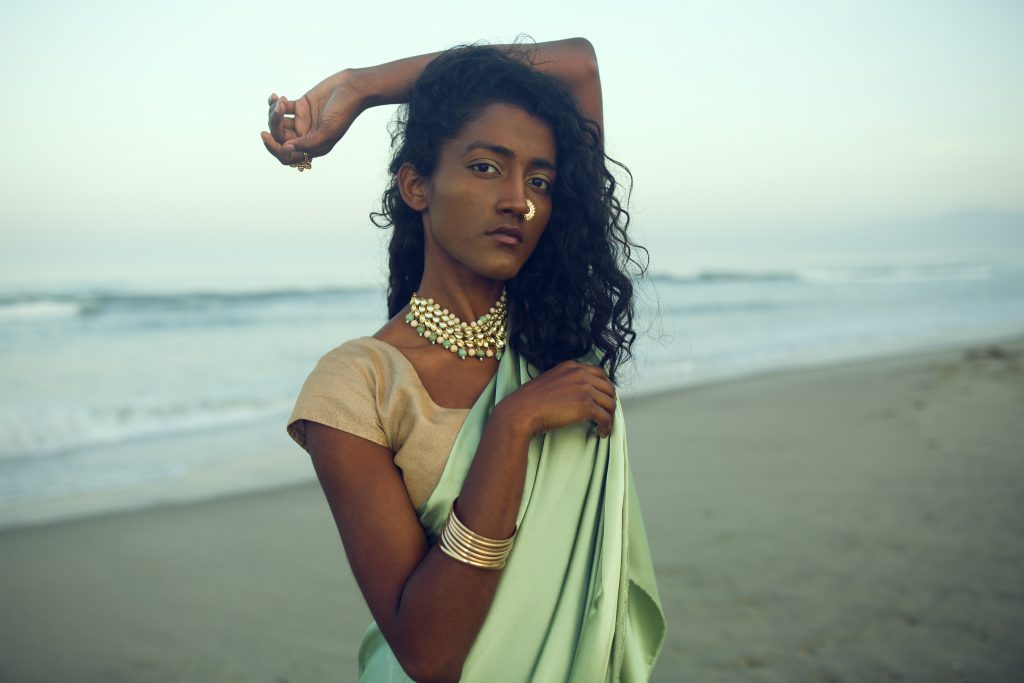
What makes you a desi-American?
I have always felt like a nomad. I was born and raised in India and then moved to China for work after I graduated and then moved to America seven years ago. I always felt like an outcast in India because of my appearance. But when I moved out of India and started getting questions about my roots, I felt like the best way to answer that was “Indian.” I feel Indian because I deeply understand and identify with Indian culture and philosophy. But I have never believed in Hindu supremacy or Hindu nationalism, which is the divisive plague that has gripped India now. I find that very difficult to identify with. I have always believed that Hinduism is a set of philosophies, fundamentally unrestricted and intentionally open to interpretation, by design. And that is I what I find most beautiful about India: it has always been the land of the seekers, open to all and deriving its strength from diversity.
But the Hindu supremacy rhetoric under Prime Minister Narendra Modi is so strong now, that when I am in India I am always losing my mind and complaining about the hatred being peddled under the guise of Hindutva and nationalism. So when I visit India, my friends joke that I am an American now, because I am always talking about freedom of speech and complaining about the anti-muslim and anti-Pakistan rhetoric.
But in America, I feel like an outsider too, because people immediately identify me as an immigrant and are always curious about my nationality. So I have realized that I don’t actually belong anywhere in particular, so I belong everywhere. I am, and always will be a nomad.
At what age did you understand your hyphenated identity was your strength, not your weakness?
When I moved to China, I realized that I was all alone in this massive world, but not lonely. I could connect with people in a completely different culture who didn’t even speak the same language as me. The friends I made there, treated me like family, bringing me traditional Chinese medicine and soup when I got sick, cheering me up when I was slammed at work, and always encouraging me to be my unique self by appreciating everything about me and asking for nothing in return. That made me believe that you can create a family anywhere. People who share the same values as you will become your tribe and no artificial boundaries matter.
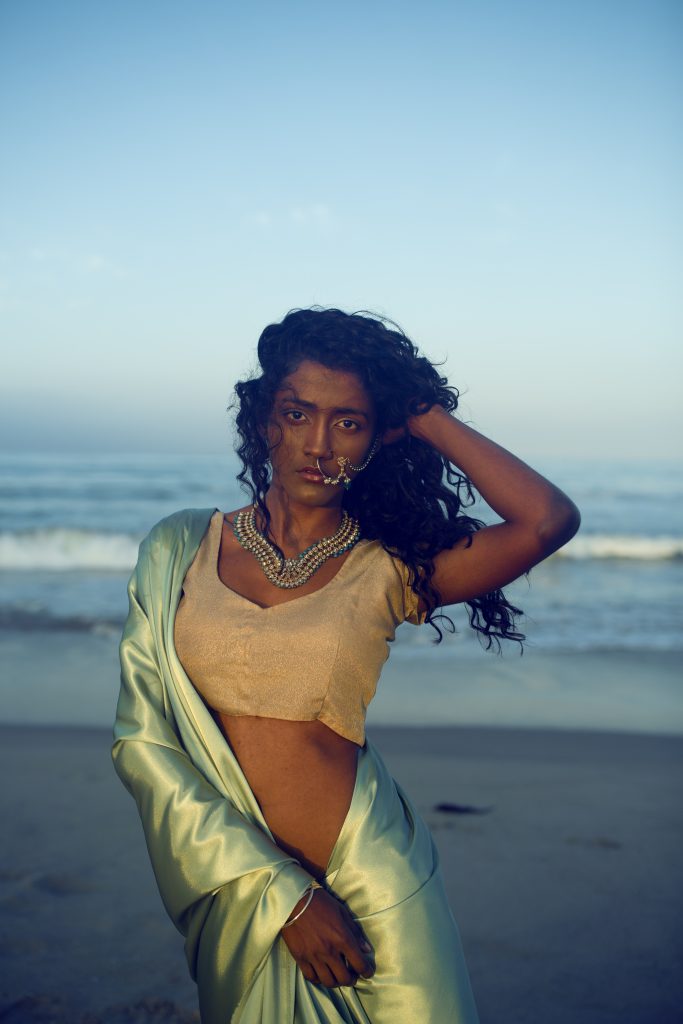
How does your hyphenated identity translate into your everyday life?
I think it has made me more open and empathetic. Your nationality doesn’t matter to me. Your values do. It doesn’t matter which country you are from, if you need help, I will help you in any way I can. If you are spreading love and creativity in the world, regardless of your cultural background, I will love you and respect you. Similarly, if you are Indian but you are spreading hate, profiting from discrimination and abusing human rights, I will never be able to respect you even though we share the same “nationality.”
Tell us about the look you chose to do for this campaign. What makes it unique to your personal style, background, and identity?
I love the ocean. I think the ocean represents the openness that I crave for and identify with. The way land could have been before we started fighting over property, creating artificial borders and fighting wars over them. I think there might be a genetic connection to it too because my ancestors were fishermen. And so when I saw the pieces were blue and green like the ocean, I really wanted to create something by the ocean. I spoke to one of my favorite photographers, Pavithra, about the pieces and she suggested shooting by ocean too without knowing about my plan. We wanted to shoot in a saree to embody the flow at the beach: the breeze, the waves. She picked up this gorgeous fabric to go with the sunrise hues at the beach, and it all came together beautifully.













